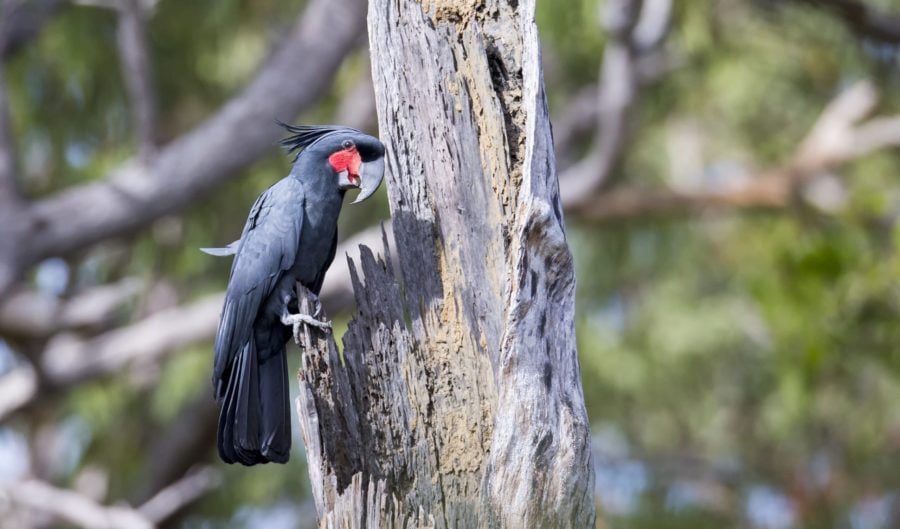Male palm cockatoos are using drums to seduce females

Male palm cockatoos (Probosciger aterrimus) are using sticks and seeds pods to create enchanting rhythms to attract their female counterparts
A study, published today in the journal, Science Advances gives insight into the role rhythm plays in not only the lives of palm cockatoos but also human beings.
“These discoveries provide a rare comparative perspective on the evolution of rhythmicity and instrumental music in our own species, and show that a preference for a regular beat can have other origins before being co-opted into group-based music and dance,” the report says.
A group of researchers studied 131 tree-tapping performances, measuring the rhythm and pace of 18 male palm cockatoos throughout the rain forests of the Cape York Peninsula.
The findings show that each of the 18 male cockatoos had a signature combination of tree-tapping, squawking and wing flapping, leading researchers to suggest that rhythm was a seductive way of communicating a birds unique traits.
“It is possible that drumming displays encode further information about the drummer. For example, humans can produce a regular beat without entertainment from early childhood, but their spontaneous beat rate slows down with age.”
This encoded drumming means that male palm cockatoos are the first animal understood to set their own rhythms, much like human drumming.
Additionally, the cockatoos are the only animals known to use specific tools to amplify sound, which one author of the paper, Robert Heinsohn said will redefine the use of tools in the animal world.
“This tool use behavior has only been recorded from the Australian population on Cape York Peninsula. In New Guinea, there are anecdotes of drumming by male palm cockatoos using their clenched foot, but tool use does not appear to have been recorded for this species outside of Australia,” the report said.
The research was published in the journal Science Adances.




